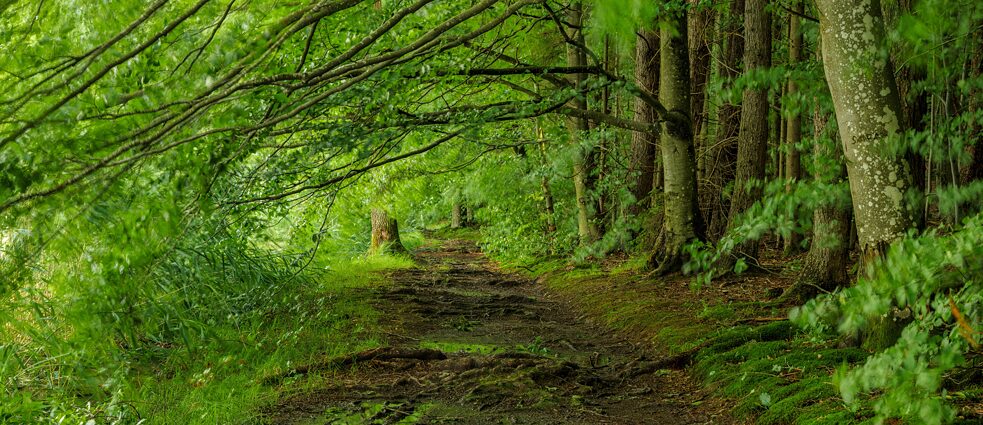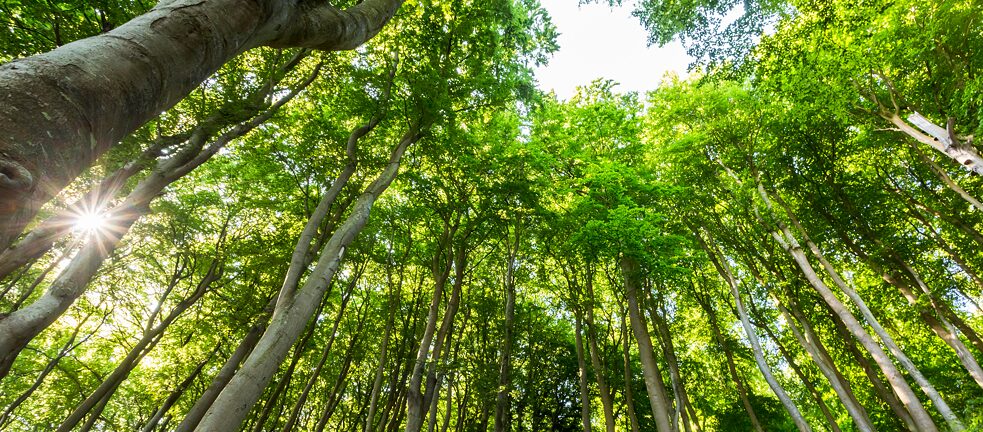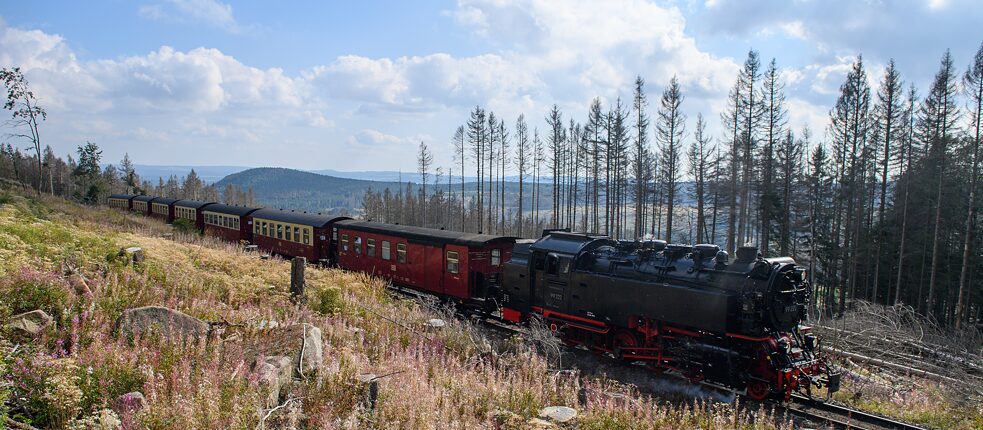Climate Change
The Forest of the Future

In Germany hundreds of thousands of hectares of forest have already succumbed to climate change. Researchers are searching full-tilt for a climate-smart forest model – a forest that could not only withstand climate change, but also, in the best-case scenario, actually mitigate it.
By Wolfgang Mulke
The trunk of the dead tree stretches several meters up into the sky. The copper beech has fallen victim to the bark beetle. While a healthy beech would not have allowed the pest to multiply, environmental researcher Manfred Forstreuter explains that this weakened tree no longer had the strength to fight off an infestation. Fungal growth is an indication it cannot be saved. In contrast, the trees around it are doing visibly better.
We are in the Grunewald, western Berlin’s largest forest. Here, biologists from the Freie Universität Berlin (FU) have created a forest research area to determine which copper beech species can best withstand external influences. Forstreuter has planted 800 trees here from Berlin’s Botanical Garden and from all over Europe. Seedlings from Sweden, Sicily, Poland, and Romania have taken root in the experimental field.
 We are in the Grunewald, western Berlin’s largest forested.
| Photo (detail): © picture alliance/blickwinkel/A. Held
“This is our air conditioning system,” Forstreuter says, pointing to his saplings. He hopes to discover a species of copper beech that can withstand climate change in Germany where the shift in weather conditions has decimated the forests between the Alps and the North Sea. “Three dry years have taken their toll on our copper beeches and stressed them,” the expert explains. Drought and rising temperatures are endangering Germany’s most important deciduous tree. They are also impacting other tree species, especially spruce, popular in forestry because it grows so fast. The bark beetle has already killed entire forests. The damage is particularly noticeable in the low mountain range of the Harz – a region researchers hope to revive by planting other deciduous trees.
We are in the Grunewald, western Berlin’s largest forested.
| Photo (detail): © picture alliance/blickwinkel/A. Held
“This is our air conditioning system,” Forstreuter says, pointing to his saplings. He hopes to discover a species of copper beech that can withstand climate change in Germany where the shift in weather conditions has decimated the forests between the Alps and the North Sea. “Three dry years have taken their toll on our copper beeches and stressed them,” the expert explains. Drought and rising temperatures are endangering Germany’s most important deciduous tree. They are also impacting other tree species, especially spruce, popular in forestry because it grows so fast. The bark beetle has already killed entire forests. The damage is particularly noticeable in the low mountain range of the Harz – a region researchers hope to revive by planting other deciduous trees.
Manfred Forstreuter is looking for a tree that can withstand these conditions, such as the Sicilian copper beech. It has smaller leaves, which means it loses less moisture. “Crossing native copper beeches with something like Sicilian copper beeches could lead to greater genetic diversity and thus open up the possibility of increased tolerance to climate change,” he explains. Like many scientists worldwide, he is searching for the forest of the future.
Climate-Resistant Mixed Forests
Almost one third of Germany is currently forested. These are not natural forests though, and all were purposely planted, usually for economic reasons. The concept of sustainability also originated in forestry: At the beginning of the 18th century, when it became apparent that the mines might run out of the wood they depended on, Saxony’s head mining administrator Carl von Carlowitz decreed that only as much timber should be harvested as would regrow.
Scientists cannot yet say with certainty what the climate-resistant forest of the future will look like. One thing is clear though: Monoculture will have to give way to mixed forests with deciduous trees. “We don’t yet know where this journey will take us,” Dirk Riestenpatt from the Berlin State Forestry Office says. Germany’s capital has large swathes of forest that he and his colleagues have been selectively converting and making more climate resilient for several years now. “Native mixed deciduous forests are taking the place of pine and weeping cherry,” he explains. Foresters in the capital do not want to rely on imported plants from arid regions, as the effects on the ecosystem could be dramatic. Berlin’s ginkgo trees are a case in point. They do not provide a habitat for native creatures. Tomtits cannot find any food in places aphids cannot live, which is how invasive species often become a danger to the ecosystem.
 A Harzer Schmalspurbahnen (HSB) train chugs past dead coniferous trees: the 2019 and 2020 droughts and the bark beetle have killed off a large number of the spruce trees in the Harz. The dead wood is now being cleared and carted away.
| Photo (detail): © picture alliance/dpa/dpa-Zentralbild/Klaus-Dietmar Gabbert
A Harzer Schmalspurbahnen (HSB) train chugs past dead coniferous trees: the 2019 and 2020 droughts and the bark beetle have killed off a large number of the spruce trees in the Harz. The dead wood is now being cleared and carted away.
| Photo (detail): © picture alliance/dpa/dpa-Zentralbild/Klaus-Dietmar Gabbert
The Forest as a Carbon Sink?
There will always be forests in future, even if current tree populations are threatened by climate change. But: “We don’t know whether they will still be able to provide all the services from timber production to local recreation,” Riestenpatt explains. Researchers also disagree on the extent to which climate-smart forestry can mitigate climate change. After all, reforestation aimed at using the forest for carbon capture only works if the carbon is permanently stored in the plants. When the trunks rot, they release CO2, though the forest soil also stores the gas.
The German government is aware of the problems. “The extreme weather of the past three years represents a turning point,” Agriculture Minister Julia Klöckner said in September 2021. Weather conditions led to the loss of 280,000 hectares of forest during this period. The German government has released its “Forest Strategy 2050” designed to mitigate further damage. “We want climate-resilient mixed forests,” the minister explains. Plans are currently being drawn up to adapt 2.7 million hectares of forestland and transform them into “climate-smart forests,” with 1.5 billion euros from the federal government going to forest managers for the project. But exactly what these climate-smart forests will look like remains to be seen.